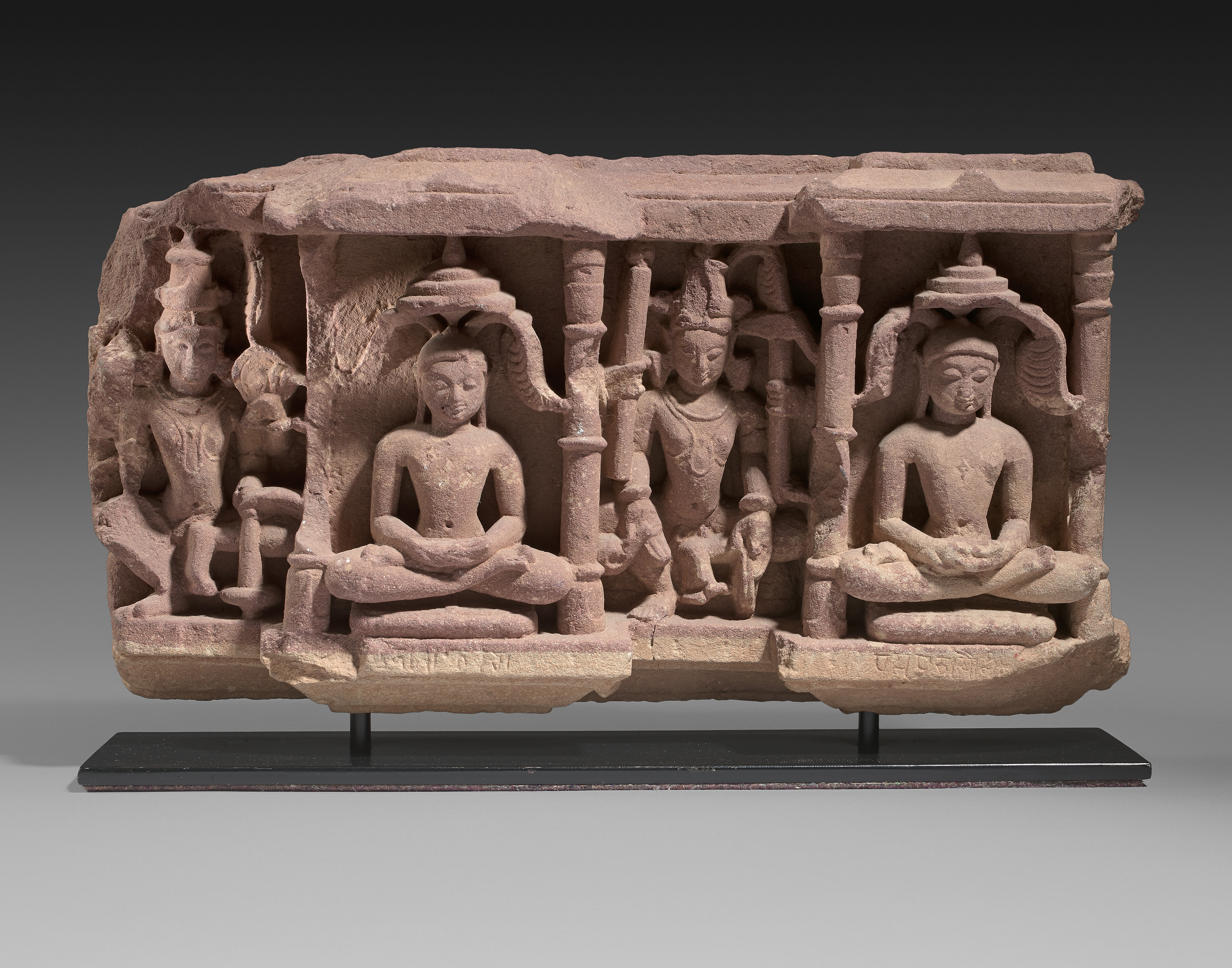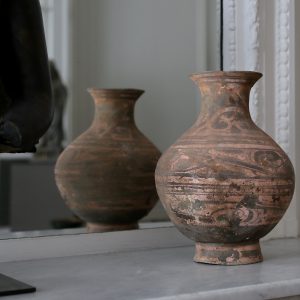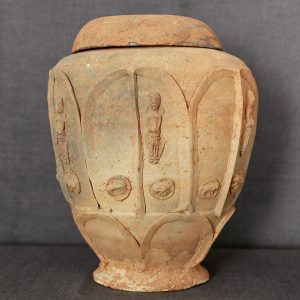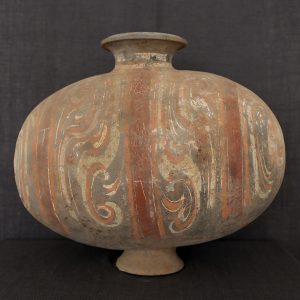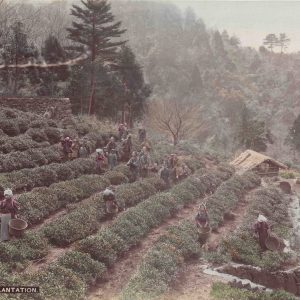Jain frieze
Sandstone
India
10th-11th century
H. 27 cm or 10 ⅝ in
Description
A charming jain frieze with a sensitive modeling
This architectural element was part of a lintel and presents an alternation of protruding and receding projections. In two niches carved in projection stands each time a Jina, or Tīrthaṅkara, omniscient beings who have broken free from the cycle of reincarnation. These extraordinary characters, twenty-four in number, of which there are twenty-four, existed down through the ages and are responsible for transmitting the foundations of Jain doctrine through the centuries. This doctrine predates Buddhism and one of its fundamental principles is non-violence (ahiṃsā), which applies to all creatures.
Auspicious symbols and spirituality
The Jina are shown here both sitting in the lotus position (padmāsana) with their hands in the lap, in meditation. “Clothed in air” or “sky clad”, which is to say entirely naked, they can thus be linked to the sect of Digambarā which preaches a total renunciation of worldly goods. A characteristic iconographic element of the Jina is the śrīvatsa, an auspicious mark, that is sculpted in the middle of their chest. One can also distinguish their cranial protuberance, which attests to their superhuman state and, like the Buddha, their elongated earlobes remind us of their princely past and in particular the heavy jewels they renounced. Their spiritual sovereignty is finally signified by the three-tiered canopy that shelters them.
Yakṣa, the guardian spirits
In the receding parts are two divine guardians, called yakṣa. Very present in Jainism, they are benevolent and accompany the Jina. Sitting at royal ease (lalitāsana), they have four arms and hold various attributes. The one on the right Is carrying a fruit and a money bag in his primary hands, as well as a probable lasso (pāśa) in the stylized shape of a stick and an elephant goad (aṅkuśa) in his secondary hands. They are both wearing high tiaras and adorned with rich jewelry: heavy earrings and a succession of necklaces, the longest of which narrows between his pectorals – a stylistic feature typical of the medieval period from the 10th century onwards.
Wooden architecture reproduced in stone
Finally, it is necessary to note this interest for the imitation of real architecture with here the representation of columns. The sides of the niches give the illusion of wooden constructions of the time. One can thus distinguish the earthen jars in which the columns are placed to protect them from humidity and wood-eating insects. These columns underline the importance of the deities. They also have a structural and aesthetic role by structuring the sculpted surface.

